All products featured are independently chosen by us. However, SoundGuys may receive a commission on orders placed through its retail links. See our ethics statement.
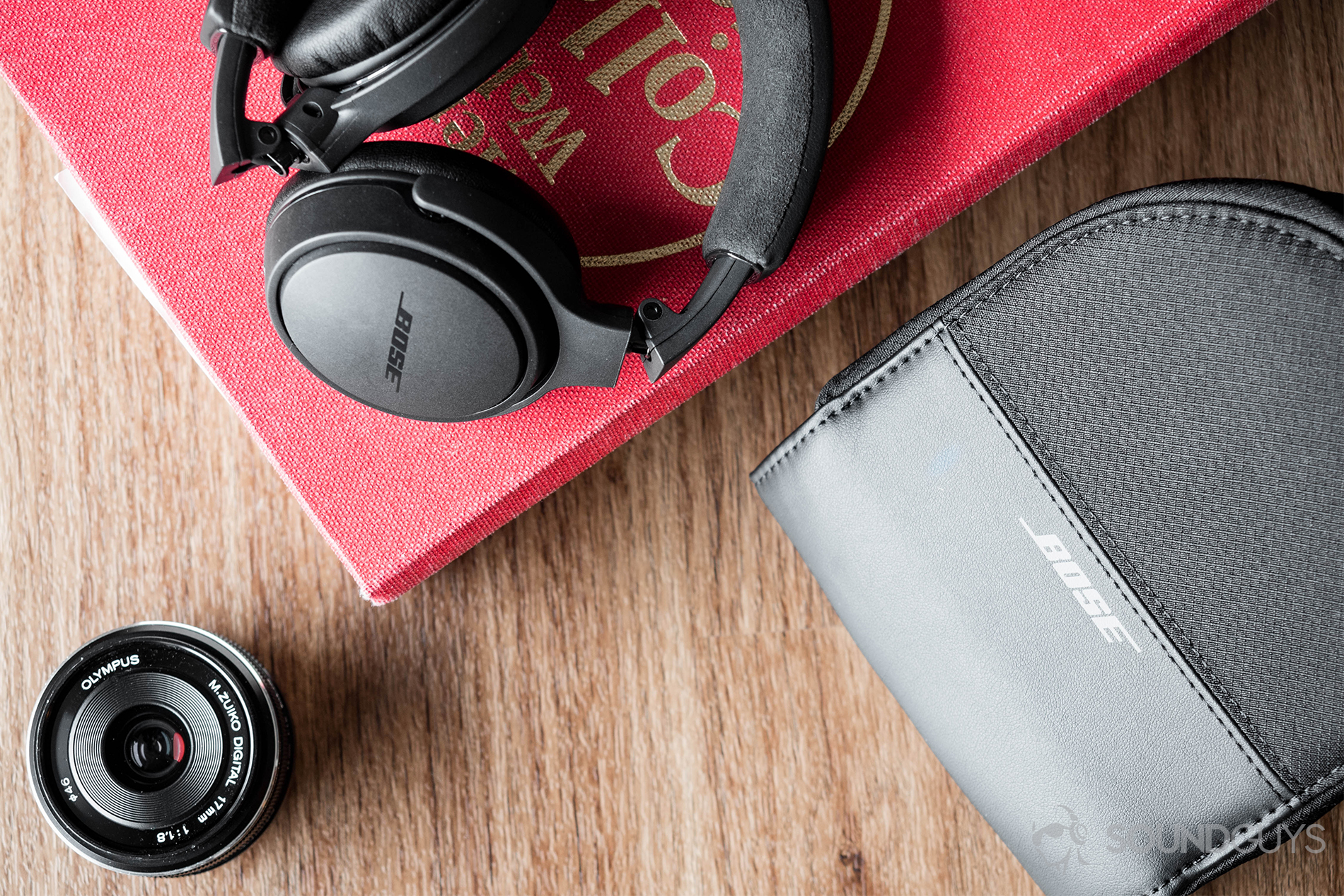
Bose SoundLink On-Ear Wireless review
March 2, 2021
SoundLink On-Ear Wireless
Just like your favorite childhood toy, the Bose SoundLink On-Ear Wireless are mostly plastic. Unlike your favorite childhood toy, these will hold your attention for more than 15 minutes. While Bose may be a bit polarizing to those in the audio enthusiast community, the Bose SoundLink On-Ear Wireless headphones offer great features such as Active EQ, dual-microphones, and soft ear pads—making these one of the best Bose headphones out there.
Editor’s note: this review was updated on March 1, 2021, to include deals.
Who are the Bose SoundLink On-Ear Wireless for?
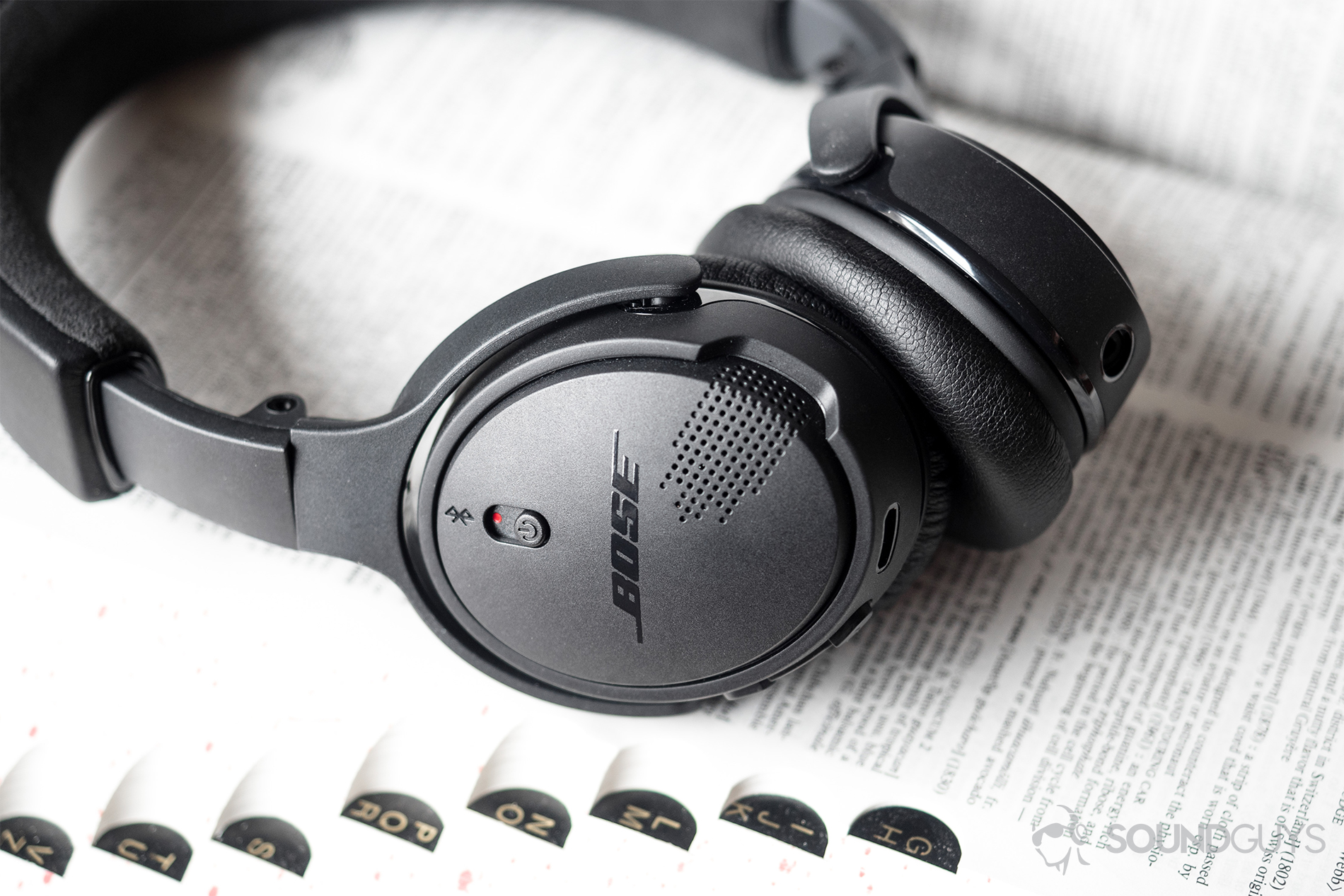
- Anyone upgrading from their phone’s earbuds. As we’ll get into later, they sound great and provide excellent connectivity—something that I unabashedly harp on when it’s sub-par. Unfortunately, the biggest barrier for consumer’s is likely the $129 price tag.
- Students should consider these renewed headphones because their compact size makes them easy to transport from laconic lecture to dilapidated discussion.
- Commuters should consider these lightweight, unobtrusive on-ear headphones. Plus, you can easily swap between devices with multipoint connectivity to aid productivity.
What is it like to use the Bose SoundLink On-Ear Wireless?

Not to be confused with the Bose SoundLink On-Ear headphones, released in 2014, the Bose SoundLink On-Ear Wireless were released at the end of 2017. Like their predecessor, the ear cups echo the shape of Adam Sandler’s self-described egghead, while retaining a nondescript, signature Bose aesthetic. The raised controls—housed on the right ear cup—are well-built, easy to differentiate by mirroring that of the SoundSport Wireless and SoundSport Free, and respond with the perfect amount of tactile resistance. Plastic construction keeps costs to a minimum, which is okay; though the Bose On-Ear Wireless don’t feel cheap, they don’t feel luxurious either. The plastic yokes rotate in either direction but feel set to snap under minimal torsion.
Regardless of the questionable durability, they’re lightweight and uphold Bose’s reputation for being supremely comfortable. Supple, velvety padding keeps the ear cups comfortable and light on the head. Not only are the Bose On-Ear Wireless a pleasure to wear for hours on end—even with glasses—they become even more compact by folding the ear cups up towards the headband, making them the size of a slightly enlarged heart. By just squeezing the headband, it doesn’t feel like it’s going to be comfortable on the crown of the head. Contrary to first-impressions, the headband distributes the On-Ear Wireless’ featherweight mass evenly across the head and on the ears to minimize pressure and maximize enjoyment.
Their compact size makes them easy to transport from laconic lecture to dilapidated discussion.
The power button is a simple sliding toggle that doubles as a way to initiate pairing. To do so, hold the button up for two seconds. Bose’s voice prompts walk users through the pairing process, making it thoughtlessly simple. Below the power and beneath the diagonally dotted pattern switch is a two-way advanced microphone system. These microphones reduce environmental din while increasing the other speaker’s volume. The system works well in coffee shops, libraries, and outside with minimal wind. Once winds exceed 25mph, you’re better off using Morse code to communicate. It’ll be less frustrating and likely just as effective.
Can you workout with the SoundLink On-Ear Wireless?
Technically, yes, you can workout in them. As a matter of fact, I ran and lifted with these a handful of times, and they’re no worse for the wear. But that was after three easy-to-moderate workouts, so I wouldn’t recommend it. If you’re sweating, the synthetic ear pads transform into a cushy inferno, and since the On-Ear Wireless lack any IP-certification, the perspiration will quickly take a toll on the material. Aside from ruining the ear pads, they’re just clearly not built with athletes in mind. When running, the headband slides around and slips off during horizontal weight-lifting—think: bench press. If you’re looking for workout on-ear headphones, the Plantronics BackBeat 500 FIT are more up your alley.
Bose’s inclusions hearken back to simpler days when the Herbie: Fully Loaded soundtrack was cemented in my Sony CD player. The provided zipper carrying case borrows its appearance from unsightly CD carrying cases of the late ‘90s and early ‘00s—but does the trick quite nicely. Inside the case is a 3.5mm cable (1.2m), a micro-USB charging cable, and the On-Ear Wireless headphones. Oh, and the headphones come with a one-year limited warranty, wherein Bose will “repair or replace… any defective parts within a reasonable period of time and free of charge.”
Connection quality is very good
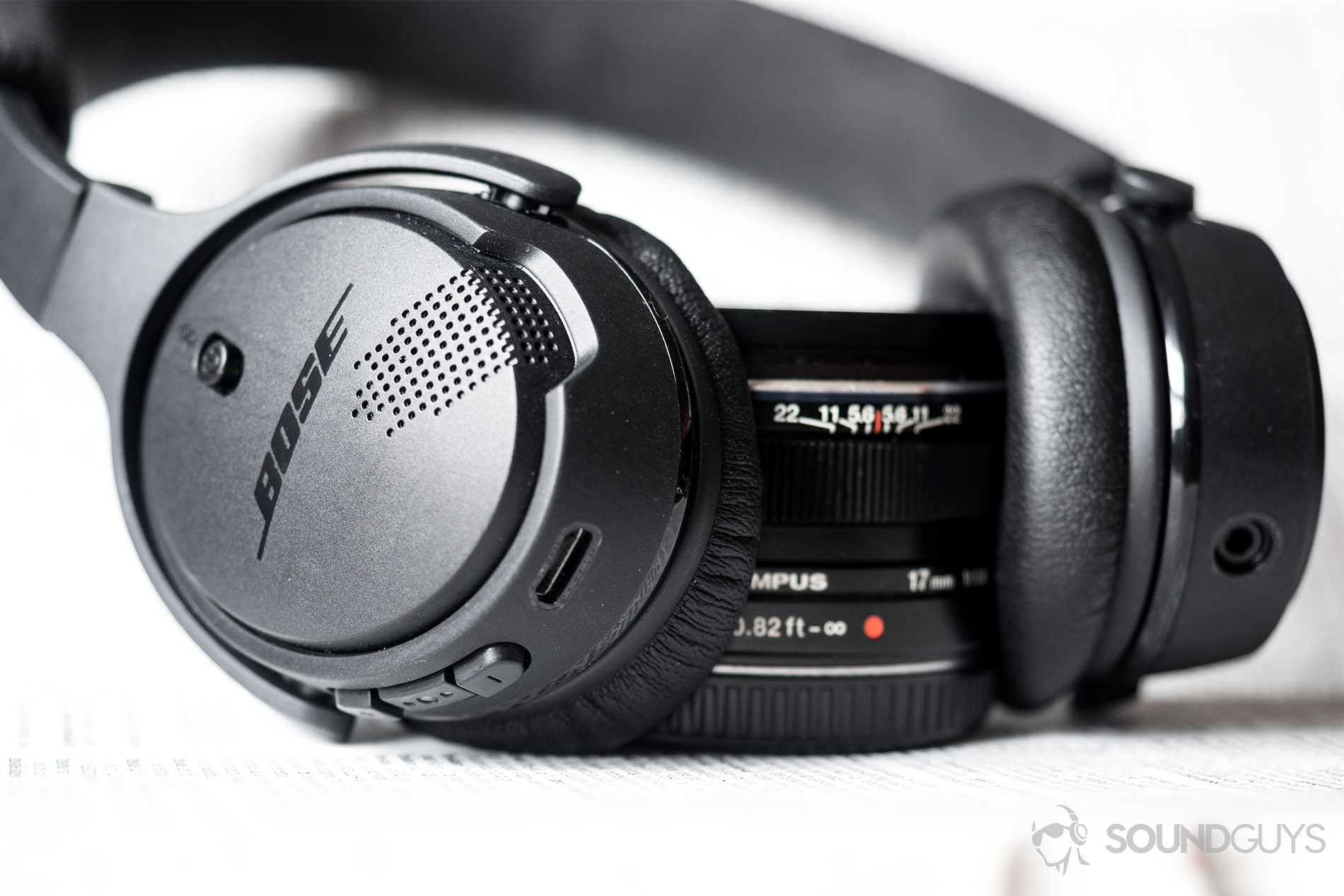
As far as multipoint technology goes, the Bose On-Ear Wireless are some of the most well-equipped Bluetooth headphones available. They flawlessly connect to two devices simultaneously and switching is just a matter of pausing media on the first and playing it on the second. There aren’t any alternating jitters, and while testing, the On-Ear Wireless never disconnected and reconnected in an attempt to switch devices. As long as we’re on the topic of outstanding execution, the Bose On-Ear Wireless provide a superb microphone experience. The aforementioned dual microphones successfully reduce ambient noise and amplify the speaker’s voice. The headphones also make volume adjustments according to your environment. Pretty smart stuff.
The Bose SoundLink On-Ear Wireless are no longer on the Bose Connect app.
Just like the Bose SoundLink Color II, Bose omits the explicit specification of compatible Bluetooth codecs. At the ground level, all that matters is this: the Bose On-Ear Wireless are responsive to virtual assistant control and play video without any pesky audio lag. If you want to feel really retro and connect via 3.5mm headphone jack, Bose includes a no-nonsense cable for that too.
Battery life is good
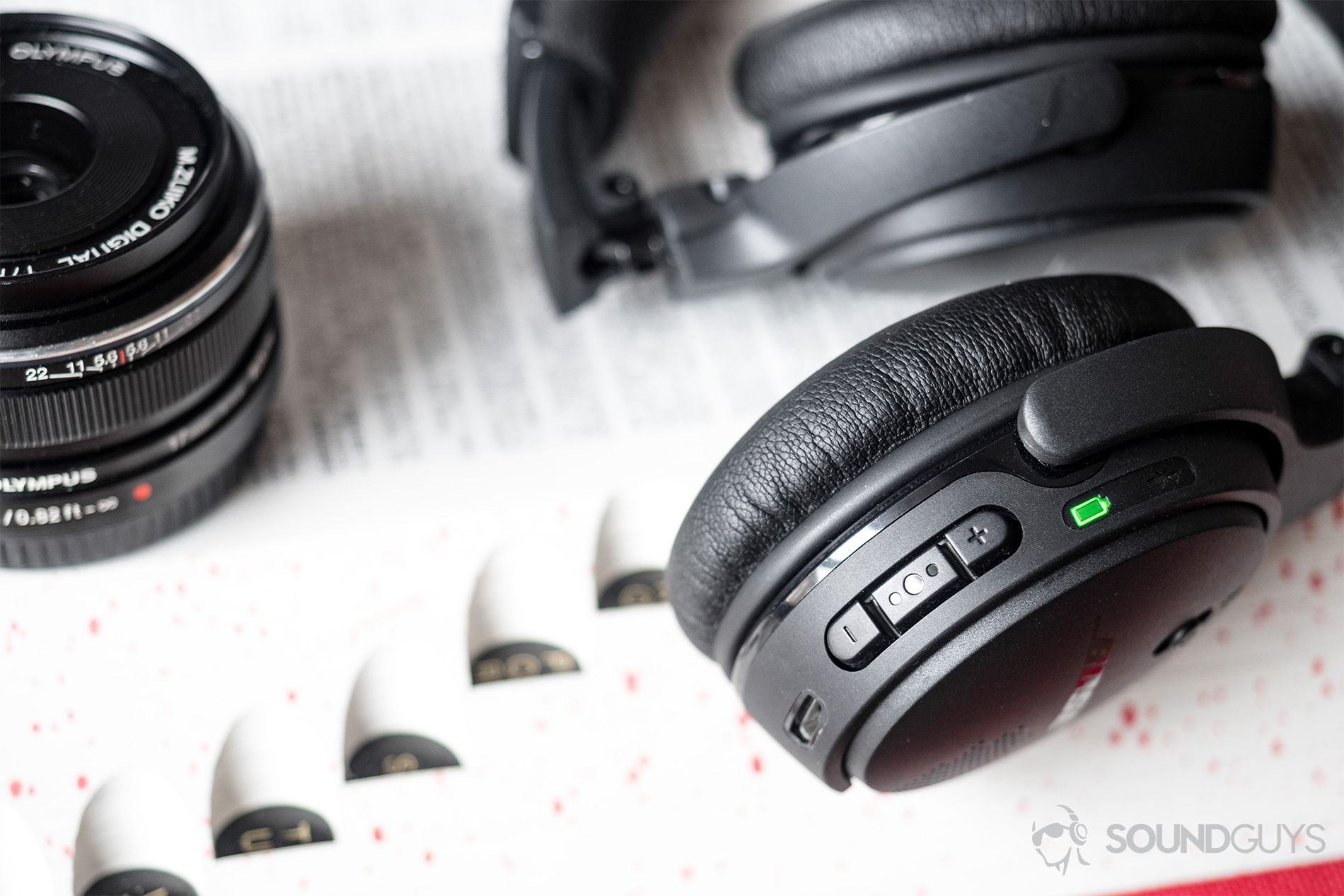
Bose claims that these last for 15 hours, but I have been able to consistently get 16 hours of playback time (volume at 50 percent) before employing my roommates to help scour our apartment for a hilariously commonplace, yet elusive, micro-USB cable. I wish that Bose would pioneer the shift from micro-USB to USB-C charging to expedite the 1.5-hour charging process. In all fairness, this is somewhat made up for by the fact that 15 minutes of charging provides two hours of playback fuel. Plus, if you need a visual indicator of the battery status, the LED glows green, amber, or blinks red to relay high, medium, or low battery, respectively.
Do the headphones sound good?
The Bose On-Ear Wireless reproduce a consumer-friendly sound that favors the mids and treble over the low-end. This tuning stays fairly consistent no matter the volume, due to Bose’s intelligent Active EQ technology. It’s a subtle feature that prevents the need to fumble around with finicky volume controls, because it’s able to calculate what notes need an appropriate boost. That said, it doesn’t make for a flat sound by any means, but to Bose’s credit, they aren’t marketing to audio engineers here.
For such a small pair of headphones, the soundstage—or illusion of 3D-space is noteworthy. At the end of New York by St. Vincent, a repeated squish—like wet boots trudging through slushed city streets—drives the fade-out. These final six seconds yield great auditory pleasure, due to the clever production behind New York inter-playing with the Bose On-Ear Wireless’ sound engineering.
Lows, mids, and highs
The lows are pretty quiet with the Bose On-Ear Wireless. To be fair, the enjoyment of prominent mids and treble depends greatly on your music, but it works well in Butterflies by Samsa. The de-emphasized bass reinforces the speaker’s prominence in the mix; hence why it’s important for Butterflies that Bose doesn’t overemphasize the low-end.
Using its Active EQ feature, the Bose On-Ear Wireless headphones maintain a consumer-friendly sound for any song.
Drive Darling by BOY opens with picking of the A, D, G, and B-strings, which introduces a dissonant tone. Chimes transition the song from verse to chorus, and are slightly emphasized. This boost meets users’ expectations of treble reproduction, making the Bose On-Ear Wireless sound more detailed than their competitors.
Two-thirds of the way through Drive Darling, a basic “boots-n-cats” beat dominates the instrumental break. Listening even closer, the snare drum complements the Sonja Glass’ urgent guitar picking. The predictable beat anchors the song, allowing for Glass’ complex picking to interweave between Valeska Steiner’s isolated notes. Though the snare is always audible, Valeska’s high-pitched picking is sometimes drowned out by the amplified midrange.
Should you buy the Bose SoundLink On-Ear Wireless in 2021?
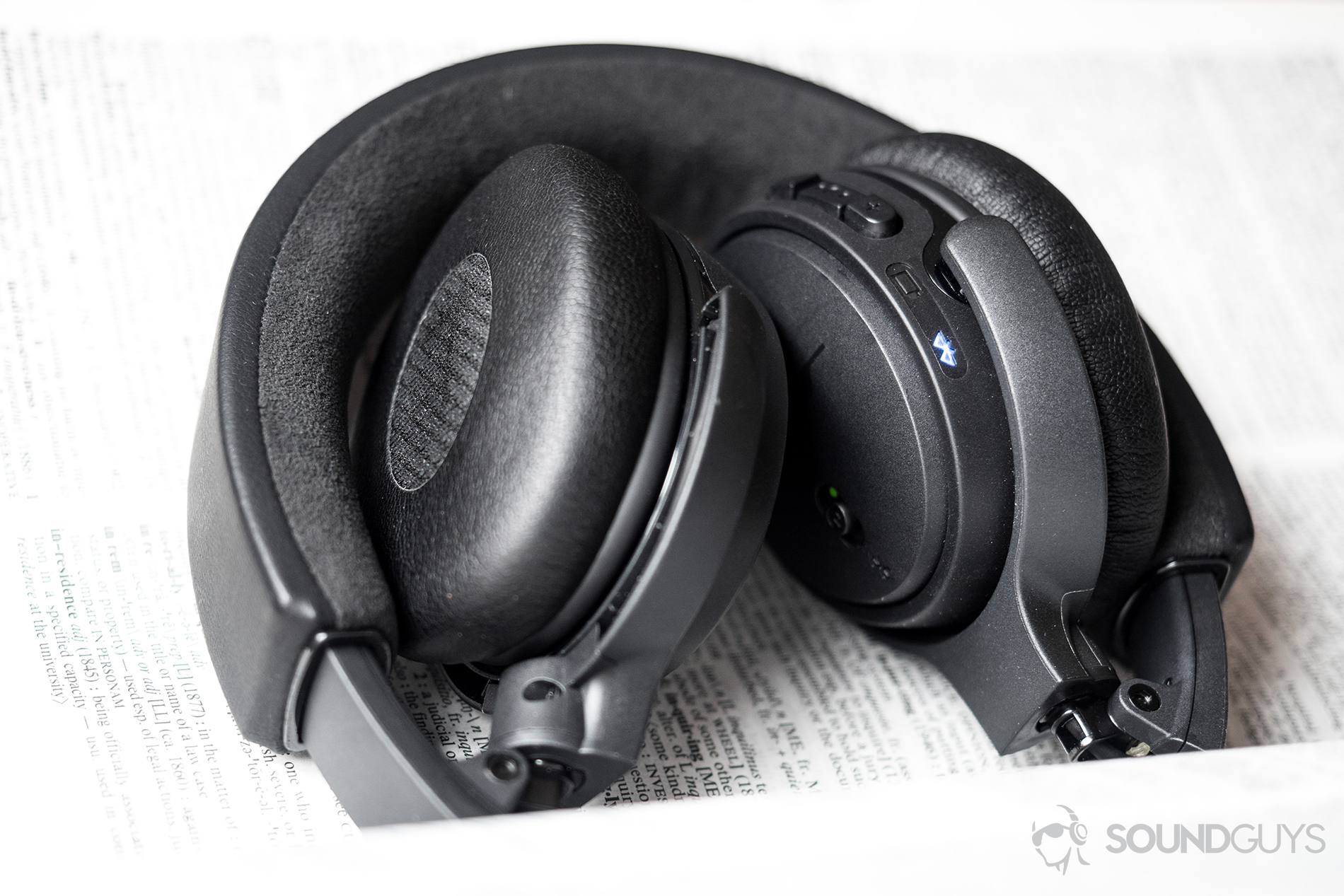
The Bose SoundLink On-Ear Wireless are only available as a renewed product, but even so, these headphones are excellent and a steal at just $129. The Bose On-Ear Wireless are absolutely worth it for students, commuters, and general consumers simply looking to upgrade their headphones without tumbling down the rabbit hole of audio equipment. These tick off daily listeners’ needs by being travel-friendly, comfortable for extended periods of time, and providing a praise-worthy Bluetooth experience. Though, these headphones haven’t swayed my preference for around-ear models over on-ear ones, they are hands-down the comfiest pair of on-ear headphones that I’ve tested.

Frequently asked questions about
Unfortunately, the Bose SoundLink On-Ear is no longer accessible on the Bose Connect app because the company only supports products that it currently sells on Bose.com.
You can replace the Bose SoundLink On-Ear earpads with ear cushions here.
Bluetooth multipoint will work automatically with the Bose SoundLink On-Ear Wireless headphones. Before it does, though, you must create an initial connection with the devices you want the Bose headphones to connect to simultaneously. Turn the headset on via the power button and Bluetooth slider; hold it until the headset prompts you that it’s entered pairing mode. Go into the Bluetooth menu of your primary source device and select the Bose SoundLink On-Ear Wireless. Once a connection has been made, turn off Bluetooth on the primary device and turn off the Bose headset. Repeat these steps with the secondary device. Now, the Bose headset will automatically recognize each device and connect to both when available.
The manual states: “Removal of the chargeable lithium-ion battery in this product shall be conducted only by a qualified professional. Please contact your local Bose® retailer.” But I’m willing to bet you could remove them if you were so inclined. Doesn’t seem like the best idea, though.
Thank you for being part of our community. Read our Comment Policy before posting.